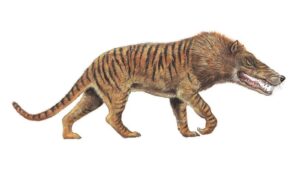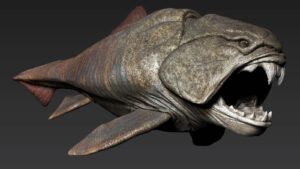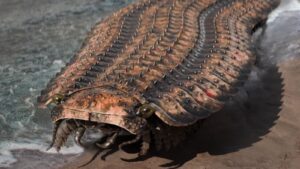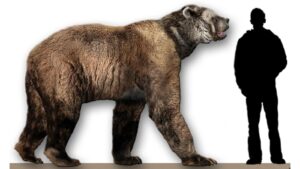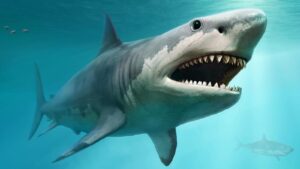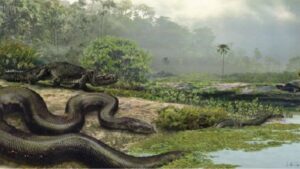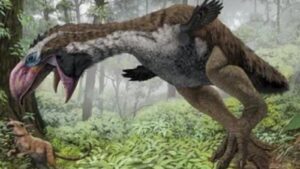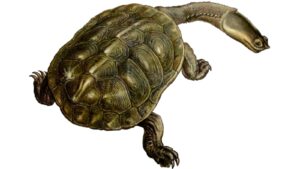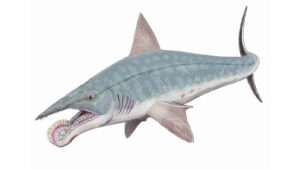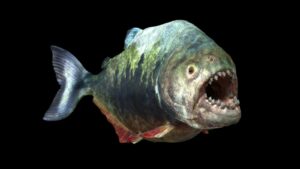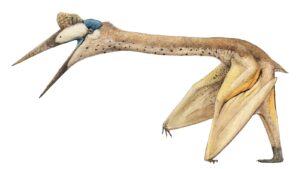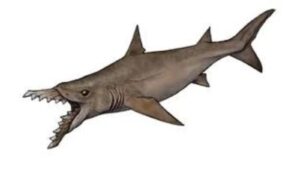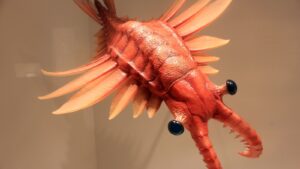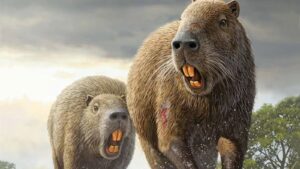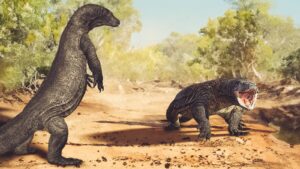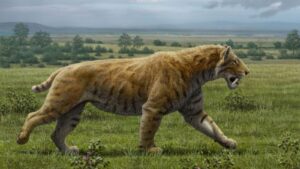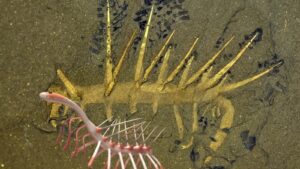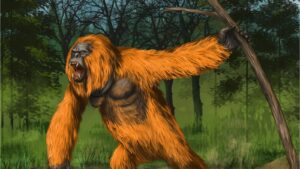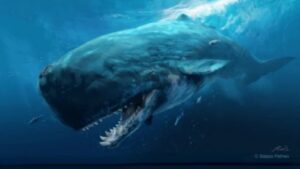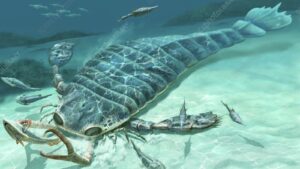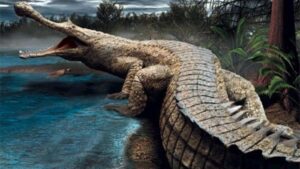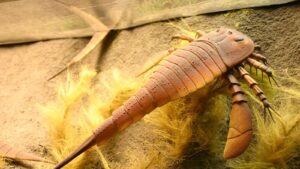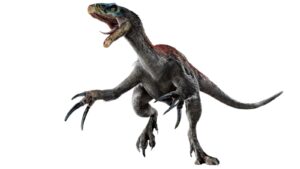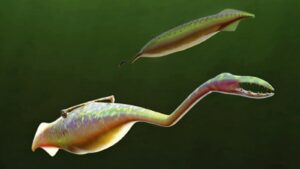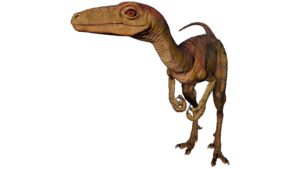Top 30 terrifying animals you are SO glad are extinct
Summary
Top 30 terrifying animals you are SO glad are extinct. Extinction is a grave issue facing our world. But when it comes to these extinct animals, we have to admit, we’re kind of glad we don’t have to face off […]
Top 30 terrifying animals you are SO glad are extinct. Extinction is a grave issue facing our world. But when it comes to these extinct animals, we have to admit, we’re kind of glad we don’t have to face off against them. If you’re afraid of big bugs and bloodthirsty predators, you’ll be glad none of these creatures are going to turn up in your backyard. This 2020,,, let’s check outthe tope top top 30 terrifying animals you are so glad are extinct.
Video: Top 30 terrifying animals you are SO glad are extinct
Andrewsarchuswsarchus
s scary animal lived during the Eocene Epoch, about 45 to 36 million years ago, and was a giant carnivorous mammal, reaching 1.8 meters in height and 3.6 meters in length. According to paleontologists, this animal could have weighed up to 1.8 metric tons, being the largest predator among land mammals. They have a complete placental tooth formula with 3 incisors, 1 canine, 4premolars,s,, and 3 molarsonn each side of the jaws, as in entelodonts.
Video: Top 30 terrifying animals you are SO glad are extinct
Meganeura
Not the dinosaur,,, butthey wereree huge dragonfly-like insects, with wings that reached up to 66 centimeters, making them one of the largest flying predatory insects in the history of the world. The ultimate fact is they lived during the Carboniferous period, 300 million years ago, and their diet consisted mainly of other insects and small amphibians. The eyes of Meganeura were likely enlarged relative to bodysize. Meganeura has spines on the tibia and tarsi, which would have functioned as a “flying trap” to capture prey.
Deinosuchus
This scary monster is an extinct animal similar to modern alligators and crocodiles that lived between 80 and 73 million years ago, during the Cretaceous. Measuring up to 12 meters in length and weighing up to 6.5 metric tons, this giant crocodile had large, sharp teeth. Deinosuchus was probably capable of killing and eating large dinosaurs. It may have also fed upon sea turtles, fish, and other aquatic and terrestrial prey.
Dunkleosteus
This extinction was a large carnivorous fish, which lived about 380 to 360 million years ago, during the Late Devonian period. It was an efficient and voracious predator thanks to itssize,e,,whichchh reached up to 10meters,s,, and a weight of almost 4 metric tons. The bright side is its head and chest were covered with articulated armored plates, which made it a slow but very powerful swimmer.
Arthropleuraopleur
This wild animal was the largest species of invertebrate of all time. It lived from 340 to 280 million years ago, from the Lower Carboniferous Period to the lower Permian Period, in today’s North America. Despite its huge size of almost 2 meters. Arthropleura was not a predator a plant-eating herbivore. IIndeed,,one of thee of the of thReddit Reddit stories. Fossilized footprints from Arthropleura have been found in many places. These appear as long, parallel rows of small prints, which indicate that it moved quickly across the forest floor, swerving to avoid obstacles, such as trees and rocks.
Arctodussus
ld animal,,, or short-faced bear, is a type of extinct bear that inhabited North America during the Pleistocene. This animal is one of the most recent creatures on the list, as it roamed the Earth until 11,000 years ago. Despite this, its size is worthy of prehistoric animals, reaching up to 3.5 meters in height when standing d weighing more than 1 metric ton. Like many other large Pleistocene animals, the short-faced bear lost much of its food supply with the arrival of humans in the Americas.
Megalodon
Megalodon is a massive prehistoric ocean animal that lived between 2 anddd 1.5 million years ago, during the Early Miocene to the Pliocene. Its name means “big tooth,” and we can imagine why. Thanks to its incredible size of up to 18 meters, it is considered one of the largest and most powerful predators that have ever existed on Earth. It could weigh up to 65 metric tons, looked like a giant, more terrifying version of the modern great white shark, and could be found worldwide.
Titanoboaoboaoboa
Currently, the largest snake on Earth is the green anaconda, with a size of 6 to 9 meters and 180 to 250 kilograms in weight. However, 58 million years ago, during the Paleocene, the extinct Titanoboa snakes roamed the Earth, being the largest and heaviest snakess ever discovered. Researchers estimate that the Titanoboa could have a total length of 12 meters and weighed around 1.1 metric tons. Their diet generally consisted of crocodiles and turtles.
Phorusrhacidae
Most birds that do not fly, like the ostrich or the penguin, are harmless to humans. However, Phorusrhacidae, also known as “terror bird,” is an extinct genus of large carnivorous birds. They were one of the largest predators in South America during the Cenozoic, some 62 million years ago, in addition to being the largest non-flying predator bird that has ever existed, up to 3 meters in height d weighing up to 500 kilograms. Their diet consisted of mammals and marsupials that are currently extinct.
Cameroceras
This sea monster was an ancient and giant ancestor of modern squids and octopuses and lived during the Ordovician, 470 to 460 million years ago,,, in the ocean. The most distinctive features of this mollusk were the huge cone-like shell and tentacles, which they used to catch fish and other sea creatures. They weighed around 900 kilograms,,, or 2,000 pounds, and their size estimates range from 6 to 12 meters,,, or 20 to 40 feet.
Carbonemysrbonemysarbonemys
s is an extinct giant turtle that lived about 60 million years ago, during the Paleocene. This means that they survived the mass extinction that killed most of the dinosaurs. This turtle was carnivorous and had massive jaws, powerful enough to eat large animals like crocodiles. A fossil found in Colombia suggests that its shell measured about 1.72 meters, but its entire body was 3 meters long and weighed around 453 kilograms.
Helicoprionlicoprionelicoprion
ge animal was a bizarre creature that went extinct some 225 million years ago. Like modern-day sharks, Helicoprion had cartilaginous bones rather than calcified ones, so the only traces it left in the fossil record were weird, whorl-like spirals of teeth that look quite unlike anything sharks sport today. When Helicoprion bit down on prey, the tooth whorl would have been forced backward, slicing and dicing the meal and moving it down toward the throat. Think of it as something like a food processor with a direct route down to the animal’s throat.
Dreadnoughtus
The largest dinosaur whose size can be calculated reliably. A very complete fossil of this sauropod was unearthed in 2009. In life,,, Dreadnoughtus was 26 meters long and weighed about 65 tons. The large Dreadnoughtus dinosaur has a few tooth marks on its vertebra, likely from a meat-eating scavenger that chewed on the dinosaur around the time of its death, the researchers said. Dreadnoughtus is known from rock deposits of southern Patagonia, Argentina, that date to about 77 million years ago.
Megapiranha
You know piranhas, those nasty, nightmarishreatures, small but deadly? Well, would you know, there existed an ancient relative to the piranha, the Megapiranha. Weighing 20 to 30 pounds,,, much different from the 2 pounds piranhas nowadays have, and native to South America between 10 and 6 million years ago, the Megapiranha fed off of gigantic creatures such as the snakes or crocodiles of its era.
Quetzalcoatlus
was the largest creature ever to fly the prehistoric skies. However, due to poor fossil records, we don’t know exactly how big it was, but there is an estimate of it having a wingspan of around 35 feet. Of course, when it comes to weight, it’s even harder to measure, but scientists think they weighed between 450 and 550 pounds. That’s quite a big bird. They stood at 10 feet tall, developed in South America around 60 million years ago, and lived during a time with few other predators in Central America…
Read More: Prehistoric Creatures That Are Still Alive today
Edestus
ok at this creature is enough to know why it’s part of this list. Although its act form is still up for debate, we know it didn’t shed teeth t that it grew new teeth and gums near the back of the mouth, pushing the older teeth and gums forward and creating some sort of curling on its jaw. It’s thought that the mouth looked like a “monstrous pair of pinking shears.” That’s going to to to leave a mark in our minds.
Dinosaurs arerere something we all know are extinct,,, but there are are are more animals that havet havet have gone extinct,t,t, and those are rare as well. Top 5 prehistoric extinctionsnsns starting from
Anomalocaris
The name literally means “abnormal shrimp,,,” and that’s exactly what the Anomalocaris was. Scientific research tells us that this creature was a predator feeding on hard-bodied sea creatures, notable for their weird eyes, and equipped with 30,000 lenses, which are believed to be the most advanced eyes of any species of its time. That’s both wonderful and scary.
Josephoartigasia
Josephoartigasia a monesi, an extinct species of South American caviomorph rodent, is the largest rodent known d lived from about 4 to 2 million years ago during the Pliocene to early Pleistocene. These massive rodents resembled gigantic capybaras the size of cows, with an estimated weight of 1 ton. Imagine a number of killer rats roaming around, 10 feet long, with another 5 feet of tail. They might have been herbivorous, but their foot-long incisors would have packed such a strong bite, it would be hard not to shriek in fear.
Megalania
These are the distant relatives of the Komodo dragons, having weighed more than 1,300 pounds and grown to be 18 feet long. They disappeared around 50,000 years ago, and they probably would have fed mostly upon medium- to large-sized animals, including any giant marsupials, along with other reptiles and small mammals, as well as birds, their eggs, and chicks.
Smilodon
Native to North and South America, the Smilodon, unfortunately, had nothing to do with smiles. This is actually the best-known example of a saber-toothed cat, a strong predator with well-developed,, long,,, and sharp canines. Some of the largest species could weigh up to 900 pounds, and that’s not what you want to have chasing you around.
National Geographiccc might not have have have caught those on camera,,, but get ready to put in your education box these most amazing top 10 prehistoric discoverieseses:
Hallucigenia
This species looks straight out of a nightmare, doesn’t it? It’s an extremely bizarre creature with a head that didn’t even include a nose, eyes, or ears. Instead, it had seven pincer-tipped tentacles on each side of its strange body, and then three pairs of tentacles behind those. Good luck sleeping at night with this creature on your mind. After 50 years, scientists discover the headheadithe heade Hallucigenia ‘worm.’ ‘worm.’
Gigantopithecus
Moving a little closer to home, the Gigantopithecus was a huge and powerful ape that roamed across areas of Asia as recently as 100,000 years ago. They were the largest known apes ever to have lived, and standing up to 9.8 feet tall and weighing up to 540kg, they are roughly seven times as heavy as the modern orangutan. Fortunately, unless you were a piece of fruit or bamboo, you would have been safe from this massive ape,, as they were strictly herbivores. Still, seeing something this big appearing through the trees must have been quite a sight for our early ancestors.
Livyatan melvillei
It is related to modern sperm whales like Moby Dick and lived during the Miocene epoch. It was 44-57 feet long and had a 10-foot-long skull that housed forty 14.5″ long teeth. These are the longest teeth used for feeding known from any animal, extinct or alive. They fed on large prey at the surface of the water,, including other whales. This whale likely became so large because it was competing directly with megalodon for food.
Jaekelopterus
ThiThis 8-foot-longthropod lived in the water and had pincher claws. Frankly, all of the eurypterids are scary as hell,, and this entire post could be exclusively about how terrifying these things look. Many of them look eerily similar to the facehuggersfrom the Alien movie franchise; they are nightmare fuel. Jaekelopterus had segmented bodies with multiple specialized limbs, some with spikes. They had spring-loaded claws to snatch up fish as they passed by, with the largest having an 18- 18-h spiked claw.
Sarcosuchus
Crocodiles of the prehistoric era were absolutely terrifying. This specific creature had 132 conical teeth that have been compared to “railroad spikes.” Unlike many carnivores who have narrow teeth that are made for slashing, Sarcosuchus’s teeth were designed to grip its prey. While Sarcosuchus wasn’t flexible, it was covered with bony armor that helped protect it from eneenemies. ey werea minimum ofmum o 40 feet long. And they lived nearly about 110 million years ag26. Pentecopterus .
Pentecopterus
This extinct creature was a huge sea scorpion that scuttled through the water in search of food. Pentecopterus had a very long head that was shielded by an exoskeleton. To capture its prey, the large scorpion had multiple giant pincers that allowed it to reach out and snag whatever it wanted. If you can imagine a giant crawdad, that’s kind of what the creature looked like. Size was a minimumum of 6 feet long,, and they lived 467 million years ago.
Irish Elk
The Irish elk finally went extinct when the antlers became so large that the animals could no longer hold up their heads or got entangled in the trees. A more modern interpretation of the function of the antlers in the giant deer suggests that they were used for sexual displays, as they are in living deer. The most recent remains of the species have been carbon dated to about 7,700 years ago in western Russia.
Therizinosaurus
It is a genus of very large therizinosaurid that lived in Asia during the Late Cretaceous period in what is now the Nemegt Formation around 70 million years ago. The first remains of Therizinosaurus were found in 1948 by a Mongolian field expedition at the Gobi Desert. When tamed, its primary use is to tickle enemies. Tickling enemies immobilizes them for 20 seconds due to hysterical laughter. They break stone, and rexes don’t, and a high-level one of these can kill a rex easily.
Tullimonstrum
This, colloquially known as the Tully Monster, is an extinct genus of soft-bodied bilateral that lived in shallow tropical coastal waters of muddy estuaries during the Pennsylvanian geological period, about 300 million years ago. A single species, T. gregarium, is known. The Tully Monster was originally discovered in the 1950s by a fossil collector named Francis Tully. Ever since its discovery, scientists have puzzled over which group of modern animals Tully belongs to.
Read More: Most Unusual Foods that Only Exist in China
Troodon
This was a meat-eater that lived in North America during the late Cretaceous period, about 74 to 65 million years ago. It was one of the dinosaurs that died out in the Cretaceous-Tertiary extinction 65 million years ago. A small but highly intelligent carnivore and among the first dinosaurs discovered in North America, Troodon possesses a deadly venomous bite, which it uses to subdue its prey. I am really glad that it actually went extinct.
Which is the most terrifying? What would happen if they didn’t become extinct? Share your thoughts in the comment section below.
